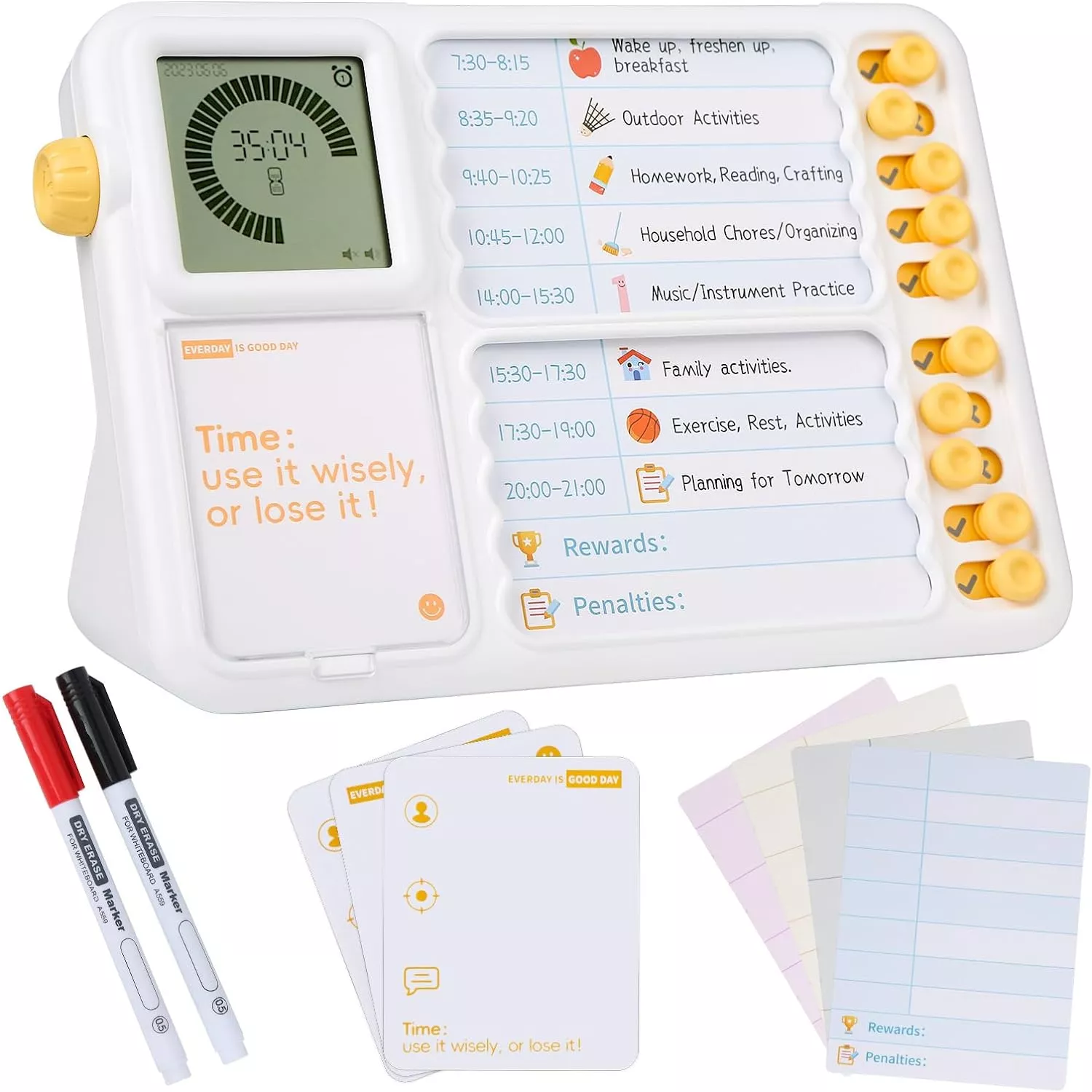
The Task Timer, Planning Board with Visual Timer for Kids, has emerged as a valuable resource for parents, educators, and children alike. Designed specifically for children with ADHD and autism, this tool aims to improve focus and promote effective time management. In this article, we delve into its features and benefits, demonstrating its efficacy in daily routines.
Product Features
| Feature | Description |
|---|---|
| Focused Learning with Noiseless Design | No distractions in classroom environments to help students stay focused. |
| Task Management and Planning | Intuitive task management panel for organizing schoolwork and chores. |
| Family Daily Assistant | Useful for morning reminders and chore schedules, promoting family participation. |
| Visual Time Management | Unique visual circular clock aiding in understanding the passage of time. |
| Assistive Tool for Special Needs Students | Caters to the specific needs of kids with autism and ADHD, enhancing self-regulation. |
Product Overview
| Pros | Cons |
|---|---|
| Visual timer enhances understanding of time. | May not appeal to children who prefer traditional timers. |
| Noiseless operation allows for distraction-free learning. | Initial setup may require parental guidance. |
| Customizable options for personalization. | Limited advanced features compared to high-tech devices. |
Understanding the Task Timer’s Design and Purpose
Incorporating the Task Timer into children’s daily routines can transform how they manage their time, especially in both home and educational settings. For parents, a great way to start is by integrating the timer into the morning schedule. For instance, I recommend using it during breakfast. I can set the timer for 10 minutes, giving my child a clear visual of how much time they have left to eat and prepare. This approach helps them stay on track without feeling rushed.
Similarly, the Task Timer can be valuable for chore management. By assigning a specific time frame for tasks such as tidying up their room or organizing their backpack, it creates a focused environment. Children often respond well when they can see the time countdown visually; it reduces anxiety and helps maintain concentration on the task at hand. Teachers can also utilize the timer during study periods. Setting it for 15 to 20 minutes can encourage children to stay engaged and avoid distractions, as they see the end goal approaching.
I’ve heard from parents who reported that their children not only complete chores more efficiently but also express greater satisfaction in their accomplishments. These testimonials remind us that visual aids can significantly impact self-regulation, making the Task Timer a crucial tool both at home and in school.
Implementing the Task Timer in Daily Routines
Integrating the Task Timer into daily routines can significantly enhance focus and organization for children, especially those with special needs. As a parent or teacher, you can take practical steps to embed the Task Timer into morning schedules, chore management, and study periods.
Starting with morning routines, I find that setting specific time blocks using the Task Timer helps children know exactly how long they have to complete each morning task, like getting dressed or having breakfast. It transforms what can sometimes feel like a chaotic start into a structured series of activities. I recommend placing the timer in a visible spot, so kids can see the countdown, helping them to self-regulate as they complete their tasks.
When it comes to chores, the Task Timer can make responsibilities feel less daunting. Breaking down tasks into smaller segments—like 10-minute tidying sessions—allows children to see progress without feeling overwhelmed. I’ve seen that utilizing the timer fosters a sense of accomplishment and responsibility, especially when they can visualize the time left.
During study periods, you can leverage the Task Timer to establish focused intervals for learning. I suggest alternating between study time and breaks, which can enhance retention and reduce frustration. By telling students that they will work for 20 minutes followed by a five-minute break, they can anticipate the breaks, which boosts motivation.
Real-life testimonials reinforce the effectiveness of these strategies. One parent shared, “The Task Timer has changed our mornings completely! My son gets ready on his own now because he knows how much time he has.” Similarly, a teacher noted, “It has made a difference in my classroom. I see kids being more engaged and focused.”
These practical implementations of the Task Timer can truly maximize the potential for self-regulation in children, creating a fulfilling experience in both home and educational settings.
Conclusions
The Task Timer is an excellent resource that aids children, especially those with ADHD and autism, in managing their time and tasks effectively. With its unique features and practical applications, it helps cultivate essential life skills such as self-discipline and focus. Embracing this tool can truly enhance your child’s daily organization.